Le Nakajima Kikka était un chasseur à réaction expérimental japonais, conçu, à la fin de la Seconde Guerre mondiale, par Kazuo Ohno et Kenichi Matsumura.
L’intérêt du Japon pour les avions à réaction s’est accru en septembre 1944, lorsque l’attaché de l’air japonais à Berlin a envoyé un grand nombre de rapports détaillés sur le programme de chasseur allemand Messerschmitt Me262.
Sur la base de ces informations, la marine japonaise ordonna à la société Nakajima de concevoir un appareil similaire mais avec des exigences plus modestes (vitesse, charge, etc…) car la capacité industrielle japonaise n’y était pas préparée.
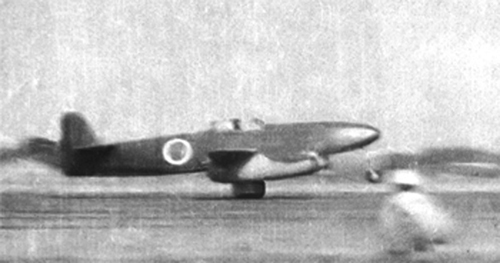
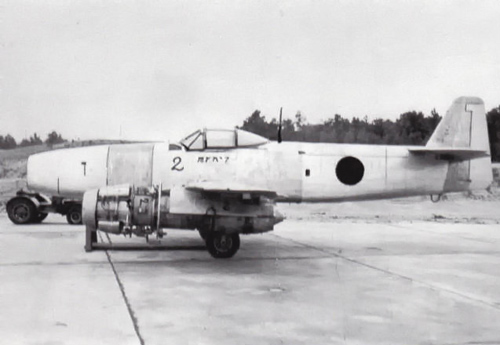
Les premières études du Nakajima Kikka prévoyaient l’utilisation d’unités TSU-11 de 440 lb de poussée, basées sur les principes de Campini et utilisant le moteur à piston Hitachi Hatsukaze (vent frais) pour entraîner un compresseur à soufflante canalisée.
Cependant, à un stade avancé de la conception, le Tsu-11 a été abandonné au profit du turboréacteur à flux centrifuge Ne-10 (TR-10). puis NE-12 (TR-12), qui ajoutait un compresseur axial à quatre étages à l’avant du Ne-10.
La première maquette du Kikka a été inspectée par des officiels de la marine le 28 janvier 1945, mais les performances estimées avec le turboréacteur NE-12 n’étaient pas impressionnantes, et il a été décidé d’effectuer un autre changement de moteur, en remplaçant le NE-12 par l’Ishikawajima NE20 .
Premier vol du Nakajima Kikka
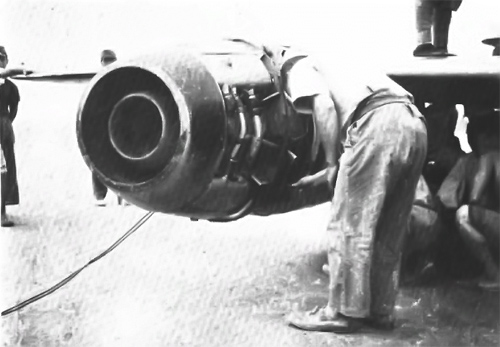
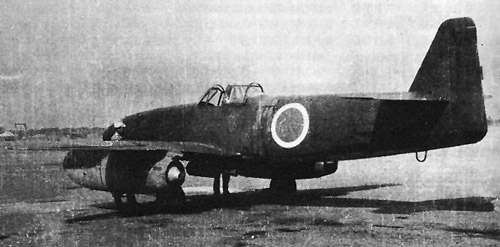

The prototype commenced ground tests at the Nakajima factory on 20th may 1945, and on 25th june the first Kikka was completed. The following month it was dismantled and delivered to Kisarazu Naval Air base where it was re-assembled and prepared for flight testing. Ground tests continued on this airfield until 13th July.
On the 7th August 1945, Lieutenant Commander Susumu Takaoka made the first flight, with a duration of 11 minutes. His take-off run of 2,380 ft. took 25 seconds at an all-up weight of 6,945 lb. Wind speed was 23 ft.per second. He landed in 3,280 ft.
A ceremonial official « initial » test flight was made on 11th August, four days later. For this flight, rocket assisted take off (RATO) units were fitted to the aircraft. However, because their alignment had been miscalculated, The acceleration was so heavy that the nose of the aircraft came up, the tail went down and skidded along the runway. As a result the aircraft did not take off at all and was damaged when it ran off the end of the runway.
Before it could be repaired Japan had surrendered and the war was over.
Kikka N° 1
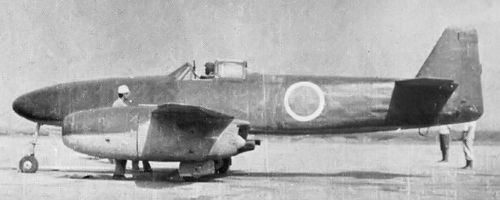
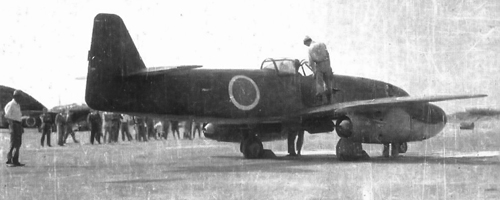
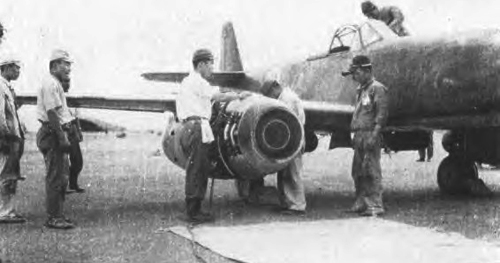
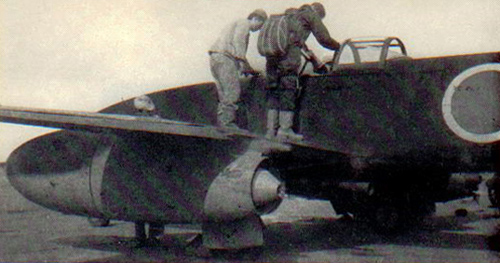
Kikka N° 2
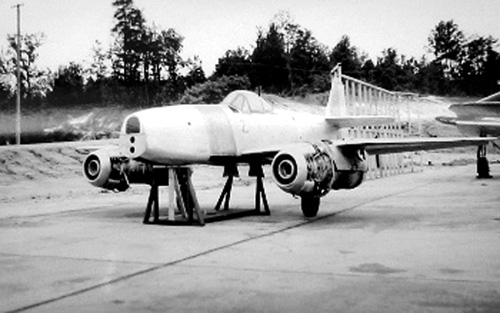
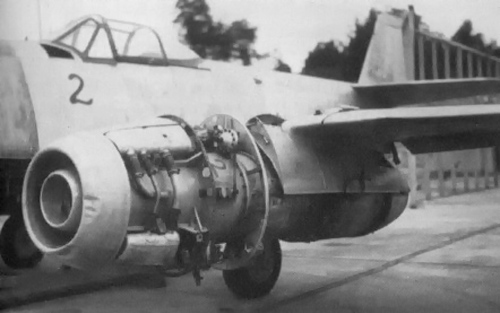
Unassembled Kikka in Nakajima’s factory.
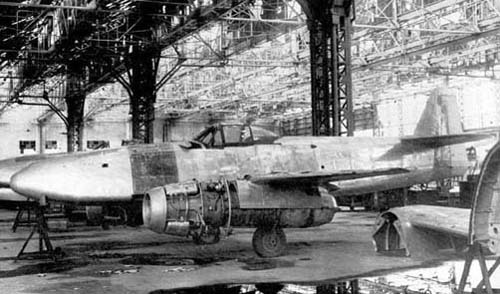
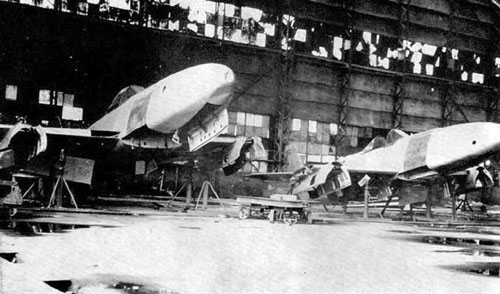
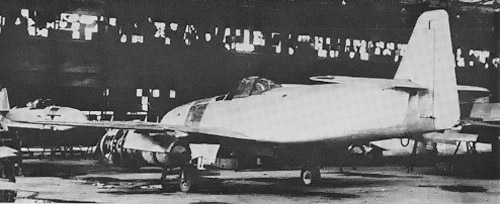
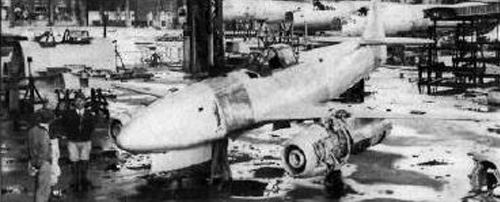
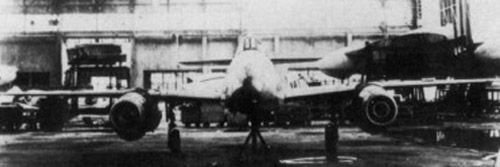
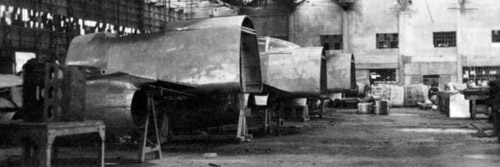
Survivors
The NASM’s Kikka
The NASM’s Kikka and an assortment of extra components are all that survive of this late war project. This aircraft was assembled from parts of the 25 pre-production Kikkas under construction at war’s end.
The aircraft’s internal systems are incomplete, and the airframe shows no signs of the landing gear damage incurred when the test pilot aborted the second flight.
The Museum also has two Ne-20 engines and these could be combined with the airframe during restoration to reconstruct an example of Japan’s limited foray into jet aviation.
Source : RCAF War Prize Flights, German and Japanese Warbird Survivors. Harold A.Skaarup
Susumu Takaoka
24 févr. 1912 – 6 févr. 1999
Test Pilot
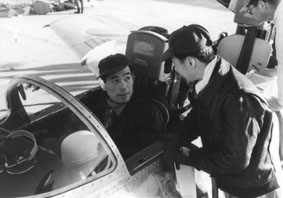
Susumu Takaoka was responsible for initial and development testing of several new aircraft for the Japanese Navy when he flew the Kikka for the first time on August 7, 1945.
In the 50s, after the Japanese had regained a part of their freedom in aeronautics, he flew again as a test pilot.
It was as Commander of the Experimental Air Unit when he realized the first flight of the Fuji T1F2 (January 17, 1958). It was the first jet trainer designed entirely in Japan.
He finished his career as General, having participated in many other programs, such as Mitsubishu MU-2.

